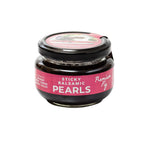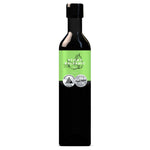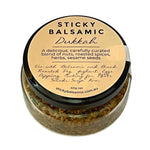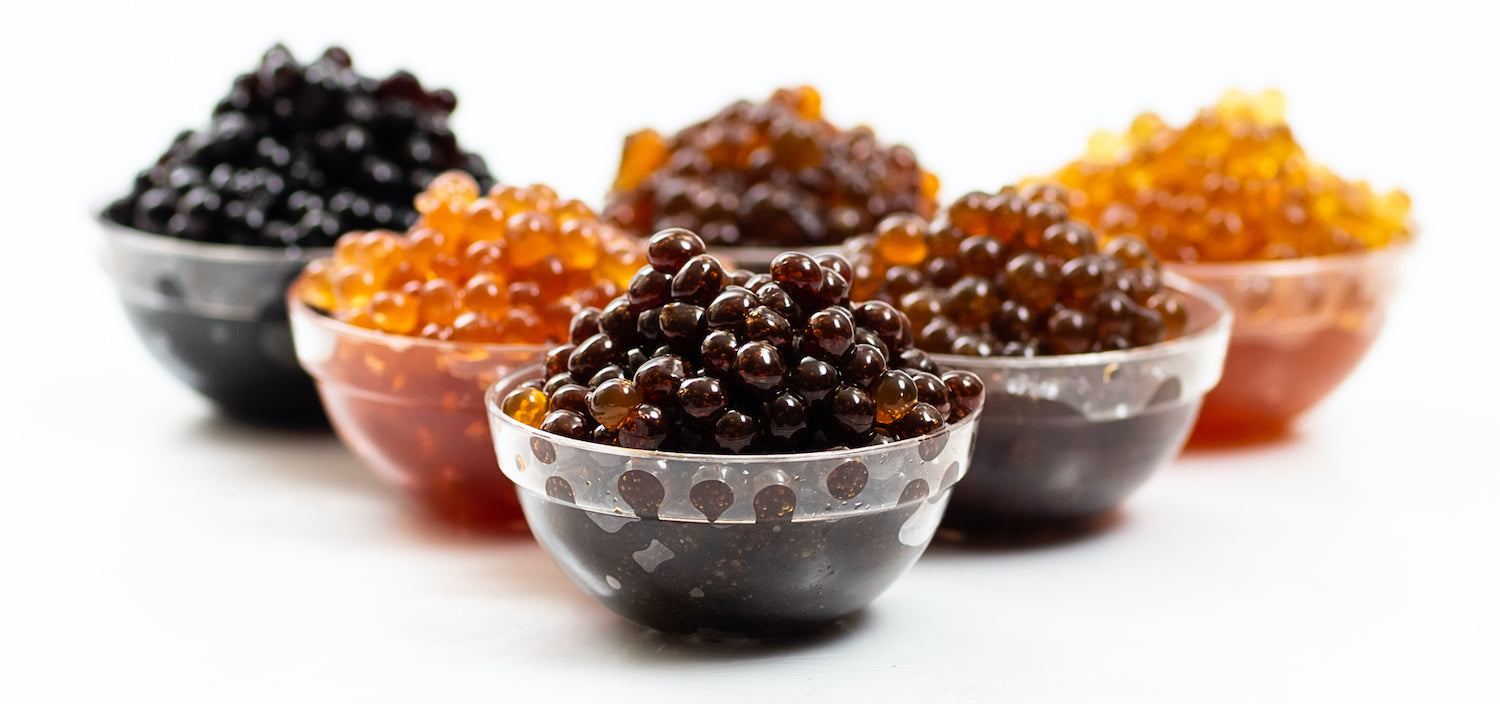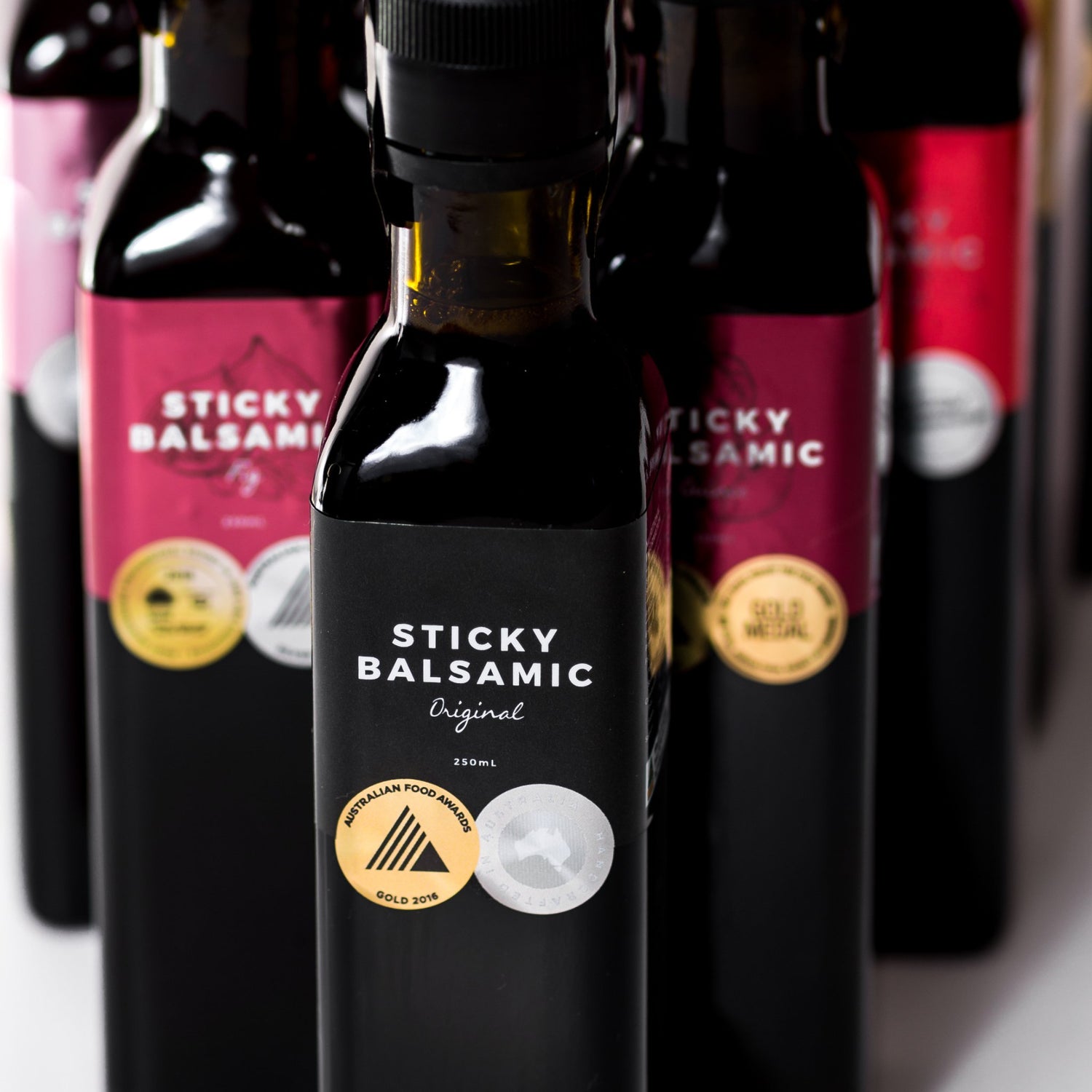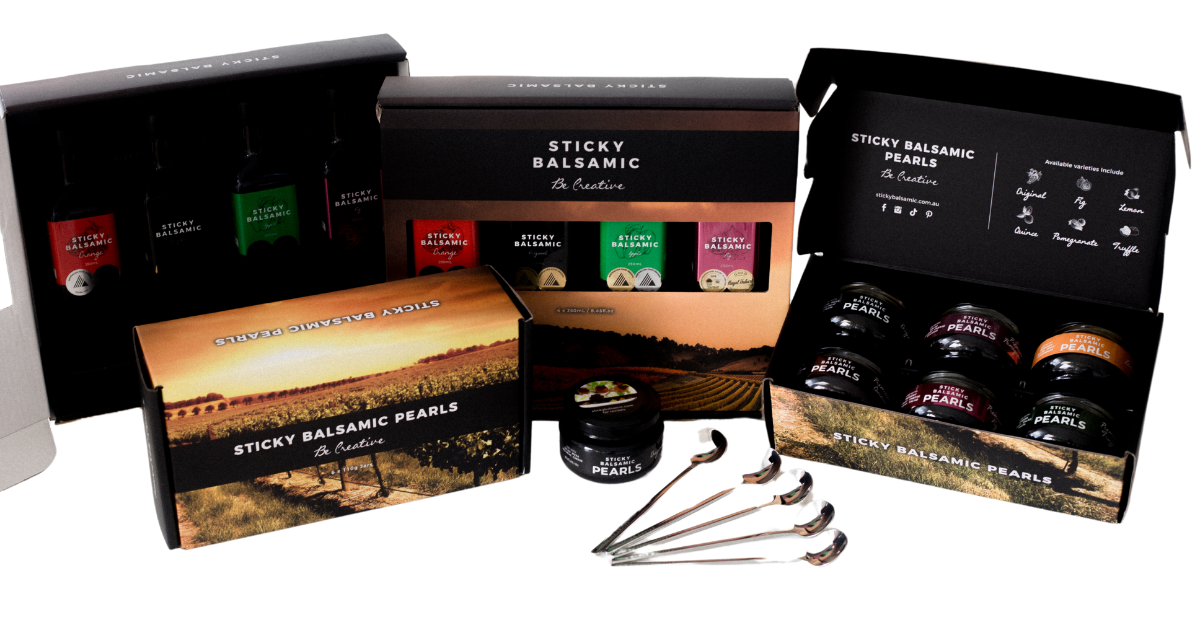You know that moment when you drizzle aged balsamic over a dish and suddenly everything tastes... more? That's not magic—that's umami at work. While most of us can easily identify sweet, salty, sour, and bitter, the fifth taste remains beautifully mysterious. Let's dive into why premium balsamic vinegar is one of the most powerful umami ingredients in your kitchen.
What Exactly Is Umami?
Umami (pronounced oo-MAH-mee) comes from the Japanese word meaning "pleasant savory taste." Discovered by chemist Kikunae Ikeda in 1908, umami wasn't officially recognized as the fifth basic taste until the 1980s. That's over 70 years of culinary mystery!
Unlike the sharp tang of sour or the obvious punch of salt, umami delivers a deep, savory, mouth-coating richness. It's the reason why aged parmesan, ripe tomatoes, and yes—quality balsamic vinegar—make everything taste more complex and satisfying.
The Science Behind the Savory
Umami flavour comes from glutamates, naturally occurring amino acids that trigger specific taste receptors on your tongue. When these receptors activate, they send signals to your brain that essentially say, "this is delicious and nutritious."
Here's where balsamic gets interesting: the aging and reduction process concentrates these glutamates naturally. As grape must slowly transforms into that thick, syrupy goodness, the umami compounds intensify. Premium aged balsamic can contain significant levels of naturally occurring glutamates—no MSG needed.
Why Balsamic Makes Everything Taste "More"
Ever notice how a drizzle of balsamic doesn't just add flavour—it amplifies what's already there? That's umami's superpower. It acts as a flavour enhancer, making sweet things taste sweeter, savory things taste richer, and bringing out hidden notes in other ingredients.
When you add Sticky Balsamic to a dish, you're not just adding acidity or sweetness. You're activating umami receptors that make your entire palate more receptive to the other flavours on the plate. It's why a simple caprese salad transforms into something restaurant-worthy with just a few drops.
Umami Stacking: The Secret Weapon
Professional chefs use a technique called "umami stacking"—combining multiple umami-rich ingredients to create exponentially more flavour depth. The effect isn't just additive; it's multiplicative.
Try these umami power combinations with Sticky Balsamic:
-
Parmesan + Sticky Balsamic Original Pearls: Double umami bomb on roasted vegetables or risotto
-
Mushrooms + Sticky Balsamic Premium Truffle: Earthy umami squared for pasta or steak
-
Tomatoes + Sticky Balsamic Premium Fig: Sweet-savory umami magic on bruschetta or pizza
-
Aged cheese + Sticky Balsamic Premium Pomegranate: Complex umami layers for cheese boards
-
Prosciutto + Sticky Balsamic Lemon Pearls: Salty-savory-bright umami on melon or figs
How Each Sticky Balsamic Flavour Delivers Umami
Sticky Balsamic Original
The classic delivers pure, concentrated umami from aged grape must. Perfect for dishes where you want that deep savory backbone without competing flavours. Use it on grilled meats, roasted root vegetables, or aged cheeses.
Sticky Balsamic Premium Truffle
Double umami threat! Truffles are naturally high in glutamates, and when combined with aged balsamic, you get an umami explosion. This is your go-to for elevating simple dishes like scrambled eggs, mashed potatoes, or pasta.
Sticky Balsamic Premium Fig
Figs contain natural glutamates that develop during drying. Combined with balsamic's umami, this creates a sweet-savory depth that's perfect for pork, duck, or blue cheese pairings.
Sticky Balsamic Premium Pomegranate
The tart-sweet pomegranate notes balance balsamic's umami, making this ideal for lighter proteins like chicken or seafood where you want savory depth without heaviness.
Sticky Balsamic Lemon
Bright citrus cuts through rich umami, creating balance. Use this when you want the flavour-enhancing effect of umami but need to keep dishes feeling fresh and light—think seafood, salads, or summer vegetables.
Sticky Balsamic Premium Quince
Quince's natural pectin and subtle sweetness complement balsamic's umami beautifully. This works wonderfully with game meats, lamb, or autumn vegetable dishes.
Practical Umami Applications in Your Kitchen
When to Add Sticky Balsamic for Maximum Umami Impact:
Finish, don't cook: For maximum umami punch, add Sticky Balsamic pearls or drizzle Sticky Balsamic Vinegar at the end of cooking. Heat can drive off some of the volatile compounds that contribute to umami perception.
Room temperature matters: Let your Sticky Balsamic come to room temperature before serving. Cold temperatures dull umami receptors, so slightly warm balsamic delivers more impact.
Fat is your friend: Umami compounds are more pronounced when paired with fats. That's why Sticky Balsamic on olive oil-dressed salads or creamy burrata tastes so incredible.
Balance is key: Too much umami can make dishes taste flat or one-dimensional. Start with a small amount and build—you can always add more.
The Sticky Balsamic Pearl Advantage
Here's where Sticky Balsamic Pearls really shine: each 7mm sphere delivers a concentrated burst of umami exactly where you want it. Unlike liquid Sticky Balsamic that spreads across a dish, Sticky Balsamic Pearls provide targeted flavour bombs that explode on the palate.
This means you get intense umami impact without overwhelming the dish. Three to five Sticky Balsamic Pearls can deliver the same flavour depth as a heavy drizzle of liquid Sticky Balsamic, but with more precision and visual appeal.
Beyond the Plate: Understanding Umami's Role
Umami isn't just about taste—it's about satisfaction. Research shows that umami-rich foods trigger satiety signals more effectively than other tastes. This is why a dish finished with quality Sticky Balsamic feels more complete and satisfying.
For home entertainers (hello, Victoria!), understanding umami is your secret weapon. A strategically placed Sticky Balsamic element can elevate a simple dish to dinner party-worthy without complicated techniques or expensive ingredients.
Common Umami Mistakes to Avoid
Using low-quality balsamic: Cheap balsamic vinegar lacks the concentration and aging that develops true umami. It's mostly acetic acid with added color and sweeteners—no umami magic there.
Adding it too early: Cooking balsamic for extended periods can break down the complex compounds that create umami depth.
Forgetting the salt: Umami and salt work synergistically. A tiny pinch of flaky sea salt alongside your Sticky Balsamic amplifies the umami effect exponentially.
Overcomplicating the dish: Umami shines when it has space to work. Don't crowd your plate with too many competing flavours—let the Sticky Balsamic do its thing.
Try This Tonight: The 5-Minute Umami Test
Want to experience the umami effect firsthand? Try this simple experiment:
-
Slice a ripe tomato and sprinkle with sea salt
-
Taste it and note the flavour
-
Add 3-5 Sticky Balsamic Original Pearls or a small drizzle of Sticky Balsamic Original
-
Taste again
Notice how the tomato tastes more tomatoey? The salt tastes saltier? Everything feels richer and more complete? That's umami stacking in action. The Sticky Balsamic isn't masking or changing the tomato's flavour—it's amplifying what was already there.
The Bottom Line
Understanding umami transforms you from someone who follows recipes to someone who truly understands flavour. Premium Sticky Balsamic isn't just a condiment—it's a powerful umami tool that can elevate virtually any dish.
Whether you're drizzling Sticky Balsamic over a simple salad or garnishing an elaborate entrée with Sticky Balsamic Pearls, you're harnessing the power of the fifth taste. And once you start recognizing umami in your cooking, you'll never look at that bottle of aged balsamic the same way again.
Ready to explore the umami effect in your own kitchen? Start with the award-winning Sticky Balsamic Original or try the Sticky Balsamic Premium Truffle variety for double umami impact. Your taste buds will thank you.

